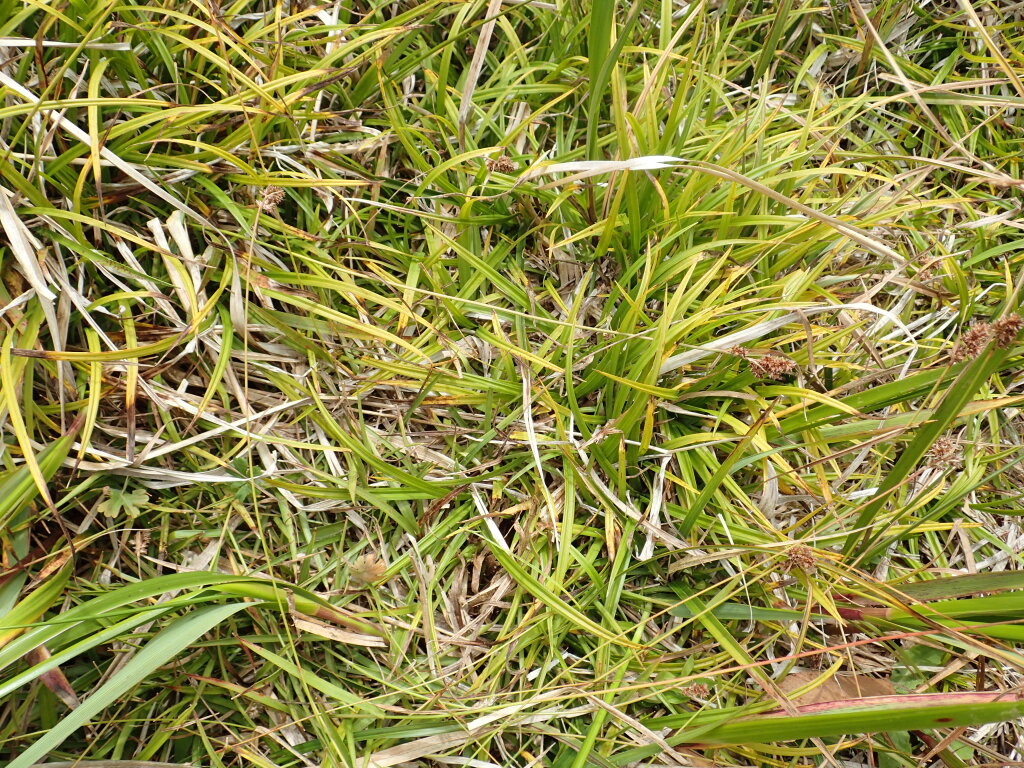Carex jackiana
Boott Carpet SedgeRhizome long; shoots ± densely tufted, often forming a dense sward to c. 1 m or more in diam. Culms very short, hidden amongst leaves, ± trigonous, ± smooth, 1–6 cm long, c. 0.7 mm diam. Leaves dark green or grey green, much exceeding culms, 5–20(–30) cm long, 2.5–7 mm wide, the margins scabrous; sheath yellow-brown; ligule obtuse to retuse. Inflorescence narrow, erect, 1–3 cm long, with 3–7 spikes solitary at nodes; lowest involucral bracts exceeding inflorescence. Spikes sessile, contiguous, erect at maturity, 0.8–1.5 cm long; uppermost spike entirely male or rarely with female flowers above; lower spikes female; glumes acute to acuminate, often long-mucronate (mucro to 2 mm long), whitish to pale red-brown with green midrib; female glumes 2.5–5 mm long, deciduous at maturity; utricles 4–6.5 mm long, 1.3–2.5 mm diam., fusiform-ellipsoid, thickened at base, faintly many-nerved, gradually tapering to the long conical beak, glabrous, greenish to pale yellow-brown, deciduous at maturity; beak 1–2 mm long, with apex notched to split; style 3-fid. Nut obovoid to ellipsoid, trigonous, pale yellow-brown or pale brown. Flowers summer.
HNF, VAlp. Also NSW. Malesia, India. Locally common in alpine areas, usually within or bordering bog or damp grassland communities.
Culms and inflorescences of Australian specimens are shorter than in the (typical) tropical material.
The glumes and utricles of this species are often deciduous at maturity.
Wilson, K.L. (1994). Cyperaceae. In: Walsh, N.G.; Entwisle, T.J., Flora of Victoria Vol. 2, Ferns and Allied Plants, Conifers and Monocotyledons, pp. 238–356. Inkata Press, Melbourne.
 Spinning
Spinning
